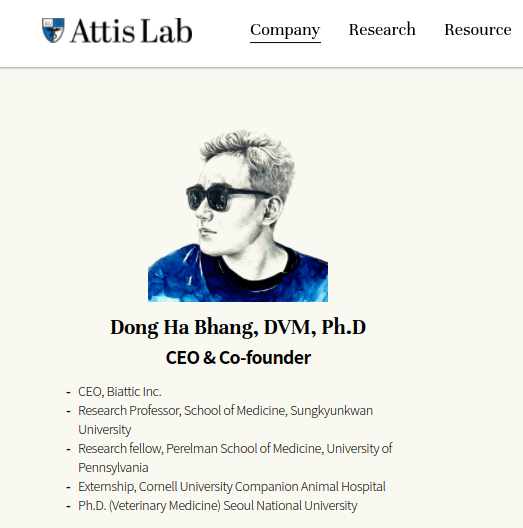I cannot go more than three months without writing about yet another new South Korean company involved in curing hair loss. The latest one is AttisLab, which comes less than two months after I wrote about Kangstem Biotech.

AttisLab: 3D Organoid Culturing and Hair Growth
AttisLab (also called Attis Lab) was founded in South Korea in 2019, but is only now becoming better known (h/t “Theo”). Their technology entails 3D organoid culturing, just like Kangstem’s hair follicle organoids.
The company’s co-founder and CEO Dr. Dong Ha Bhang gave an interesting interview in December 2023 that is worth reading after translation. I highlight the key points further below.
Note that Mr. Bhang completed his Postsdoc at the University of Pennsylvania. The other co-founder Dr. Kwan-Hyuck Baek is a research fellow at Harvard Medical school. Several of their advisors work at Columbia University. Their VP Thorsten Sperber is a highly experienced scientist and biopharma consultant.
I was 50/50 about covering this startup company so soon. However, when I saw their entire team listing, I got more curious. Of most interest to me, their CEO, head researcher, a scientist and an advisor all undertook research at the Perelman School of Medicine at the University of Pennsylvania. The latter is home to George Cotsarelis, and is perhaps the premier hair and skin related research center in the US.
Interestingly, CEO Dong Ha Bhang also runs Biattic, which is geared towards improving animal health and life. One of the paragraphs on their site is applicable to most developed nations today:
While the number of family members is decreasing, the interest in pets has increased. The number of pets in South Korea has reached 10 million.
3D Organoids versus 3D Spheroids
Make sure to also check out my past posts on 3D culturing and 3D spheroids. Note that 3D organoids are not the same as 3D spheroids. Organoids are advanced mini-organs that are far more complex and very similar to real organs. You can read more about 3D organoids versus 3D spheroids on this page.
Early Commercialization of Hair Loss and Wrinkle Treatments
AttisLab’s main long-term goal is the treatment of cancer and the disease of various organs such as the kidney and liver. However, hair loss is more likely to be treated in the near term per the CEO interview. Some other highlights:
- Among the technologies owned by AttisLab, hair loss and skin improvement (wrinkle treatment) are areas that can be commercialized early.
- The company plans to enter the Japanese medical market first via commercializing autologous stem cell treatments. This is due to Japan’s cell therapy sector being at an advanced stage of development. AttisLab will provide treatments through a regenerative medicine hospital in Tokyo.
- They are also in the process of entering the United States hair loss treatment market due to its large size.
- In its home nation of South Korea, the regenerative medicine legal framework was only enacted relatively recently, AttisLab expects this system to improve rapidly.
- In November 2023, Attis Lab attracted a $2.4 million investment from a US based investment corporation.
- The hair loss treatment will use autologous adult hair follicle stem cells, so it will be safe and pain free. Adult hair follicle stem cells will be cultured as 3D organoids and preserved through a cell storage system. These cells can be continuously replenished if additional treatments are needed.
Key quote from CEO Bhang:
“Compared to other companies researching stem cells, AttisLab’s autologous adult stem cell culture technology allows for mass culture that is approximately 1,000 to 100,000 times more efficient using 3D cell culture technology.”
On AttisLab’s website, I also noticed the following statement:
We succeeded in the mass production of stem cells using 3D organoid culture technology. Utilizing this feat, we are currently in the process of developing personalized cell therapy using various types of stem cells.
As always, we can’t take any of this very seriously until clinical trials begin. Or unless the company can proceed without any trials in Japan in the future due to the autologous nature of this procedure. In either case, it is always great to see companies that are started and led by highly experienced scientists.